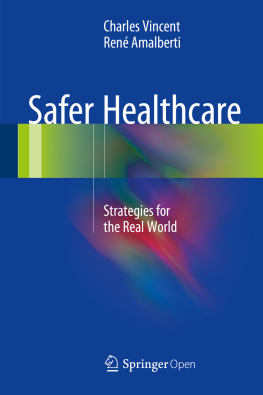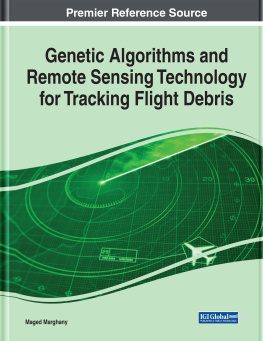Twenty-five years ago the field of patient safety, apart from a number of early pioneers, did not exist and the lack of research and attention to medical accidents could reasonably be described as negligent (Vincent ). There is now widespread acceptance and awareness of the problem of medical harm and, in the last decade, considerable efforts have been made to improve the safety of healthcare. Progress has however been slower than originally anticipated and the earlier optimism has been replaced by a more realistic longer-term perspective. There has undoubtedly been substantial progress but we believe that future progress, particularly in the wider healthcare system, will require a broader vision of patient safety. In this chapter we briefly review progress on patient safety and consider the principal future challenges as we see them.
Progress on Patient Safety
With the massive attention now given to patient safety it is easy to forget how difficult it was in earlier years to even find clear accounts of patient harm, never mind describe and analyse them. Medico-legal files, oriented to blame and compensation rather than safety, were the principal source of information (Lee and Domino ). In contrast narrative case histories and accompanying analyses and commentary are now widely available. Analyses of incidents are now routinely performed, albeit often in a framework of accountability rather than in the spirit of reflection and learning.
Major progress has been made in assessing the nature and scale of harm in many countries. The findings of the major record review studies are widely accepted (de Vries et al. ).
Analyses of safety incidents have revealed a wide range of contributory factors and that individual staff are often the inheritors of wider system problems (Reason ). Regulation of both organisations and individuals is increasing and every healthcare professional now has a clear duty to report consistent poor performance from a colleague. Drawing attention to safety issues is actively encouraged at the highest levels, although many whistle-blowers are still shabbily treated and persecuted for their efforts. All of these developments represent an increasing concern with safety and determination to improve basic standards.
Substantial progress has also been made in mapping and understanding safety issues. Surgery, for instance, was long ago identified as the source of a high proportion of preventable adverse events. A decade ago most of these would have been considered unavoidable or ascribed, generally incorrectly, as due to poor individual practice (Calland et al. ).
A considerable number of interventions of different kinds have shown that errors can be reduced and processes made more reliable. Interventions such as computer order entry, standardisation and simplification of processes and systematic handover have all been shown to improve reliability, and in some cases reduce harm, in specific contexts. We have however relatively few examples of large scale interventions which have made a demonstrable impact on patient safety, the two most notable exceptions being the reduction of central line infections in Michigan and the introduction of the WHO surgical safety checklist (Pronovost et al. ).
Table 1.1
Progress in patient safety over two decades
| Where we were (1995) | Where we are now (2015) |
|---|
Foundations | Incident reporting, continuous improvement and development of best practice | Largely unchanged. More translation and use of industrial approaches to safety, increased attention to incident analysis, learning and feedback |
Definition | Harm defined from a professional standpoint, rooted in a medico-legal and insurance perspective. Narrow vision of causality, direct association between technical care and harm | Patient safety still linked to a medico-legal perspective. Broader understanding of human error and organisational influences |
Perimeter of inclusion | Dominant technical vision of care, improved clinical protocols as main priority for improving safety | Recognition of the importance of human factors and human sciences. Organisational factors and safety culture are additional priorities for safety |
Measurement | Counting incidents and adverse events | Largely unchanged |
While specific interventions have been shown to be effective it has proved much more difficult to improve safety across organisations. The United Kingdom Safer Patients Initiative, which engaged some of the acknowledged leaders in the field, was one of the largest and most carefully studied intervention programmes. The programme was successful in many respects, in that it engaged and energised staff and produced pockets of sustained improvement. However it failed to demonstrate large scale change on a variety of measures of culture, process and outcomes (Benning et al. )
Compared to a decade ago, we now have a good understanding of the phenomenology of error and harm, a considerable amount of epidemiological data, some understanding of the causes of harm, demonstrations of the efficacy of certain interventions and the effectiveness of a few. We do not have clear evidence of wide sustained change or widespread improvements in the safety of healthcare systems. All in all, progress looks reasonable if not spectacular. Given the level of resources allocated to safety, still tiny in comparison with biomedicine, progress looks reasonably good.
We believe that the concept of patient safety we are working with is too narrow and that future progress, particularly outside hospitals, will require a broader vision. In the remainder of this chapter we set out some challenges and confusions that we regard as particularly critical. These provide both the motivation for our work together and also an introduction to our approach.
Harm Has Been Defined Too Narrowly
We agree with those who seek to provide a more positive vision of safety (Hollnagel ). The punitive approach sometimes taken by governments, regulators and the media is, for the most part, deeply unfair and damaging. Healthcare while enormously beneficial is, like many other important industries, also inherently hazardous. Treating patients safely as well as effectively should be regarded as an achievement and celebrated.
We make no apologies however for continuing to focus on harm as the touchstone for patient safety and the motivation for our work. We will put up with errors and problems in our care, to some extent at least, as long as we do not come to harm and the overall benefits clearly outweigh any problems we may encounter. Many errors do not lead to harm and may even be necessary to the learning and maintenance of safety. Surgeons, for example, may make several minor errors during a procedure, none of which really compromise the patients safety or the final outcome of the operation.
Patient safety, particularly the large scale studies of adverse events, has its origins in a medico-legal concept of harm. We have, for the most part, now separated the concept of harm from that of negligence which is an important achievement, though we still tend to think of safety as being the absence of specific harmful or potential harmful events (Runciman et al. ). In some contexts, this would simply be seen as poor quality care falling below the accepted standard. But for the patient a serious failure can lead to untreated or unrecognised disease and, from their perspective, to harm.








